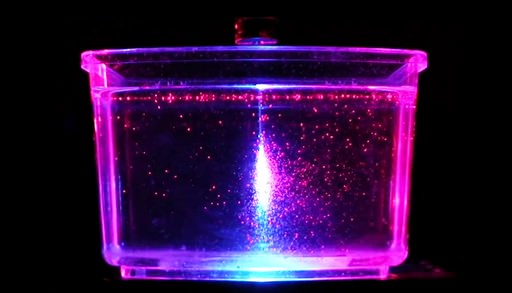With the help of lasers, researchers have shown that the movement of tiny “sea monkeys” can actually affect water currents on an oceanwide scale.
A study conducted by researchers Monica Wilhelmus and John Dabiri at the California Institute of Technology have shown that the migration patterns of Artemia salina—more popularly known as brine shrimp or “sea monkeys”—may have an effect on ocean circulation patterns.
Dabiri previously showed, in a study published in 2009, that the movement of small creatures like jellyfish could have a significant impact on hydrodynamics.
“Now, these new lab experiments show that similar effects can occur in organisms that are much smaller but also more numerous — and therefore potentially more impactful in regions of the ocean important for climate,” Dabiri said in a press release.
Scientists observed the hydrodynamic influence of swimming brine shrimp by coaxing their movement using lasers. A horizontal green laser enticed them to the surface, while a vertical blue laser encouraged them to focus their path along a central column. A high-speed camera outfitted with an invisible red laser help scientists measure the shrimp’s movement and the swirl of the water.
Scientists were then able to scale up their measurements, creating a model to better understand how a school of zooplankton numbering in the billions might influence ocean currents. Their results showed a collective force stronger than if scientists were to just multiply an individual organism’s effects on the water immediately surrounding them.
Agencies/Canadajournal
 Canada Journal – News of the World Articles and videos to bring you the biggest Canadian news stories from across the country every day
Canada Journal – News of the World Articles and videos to bring you the biggest Canadian news stories from across the country every day



